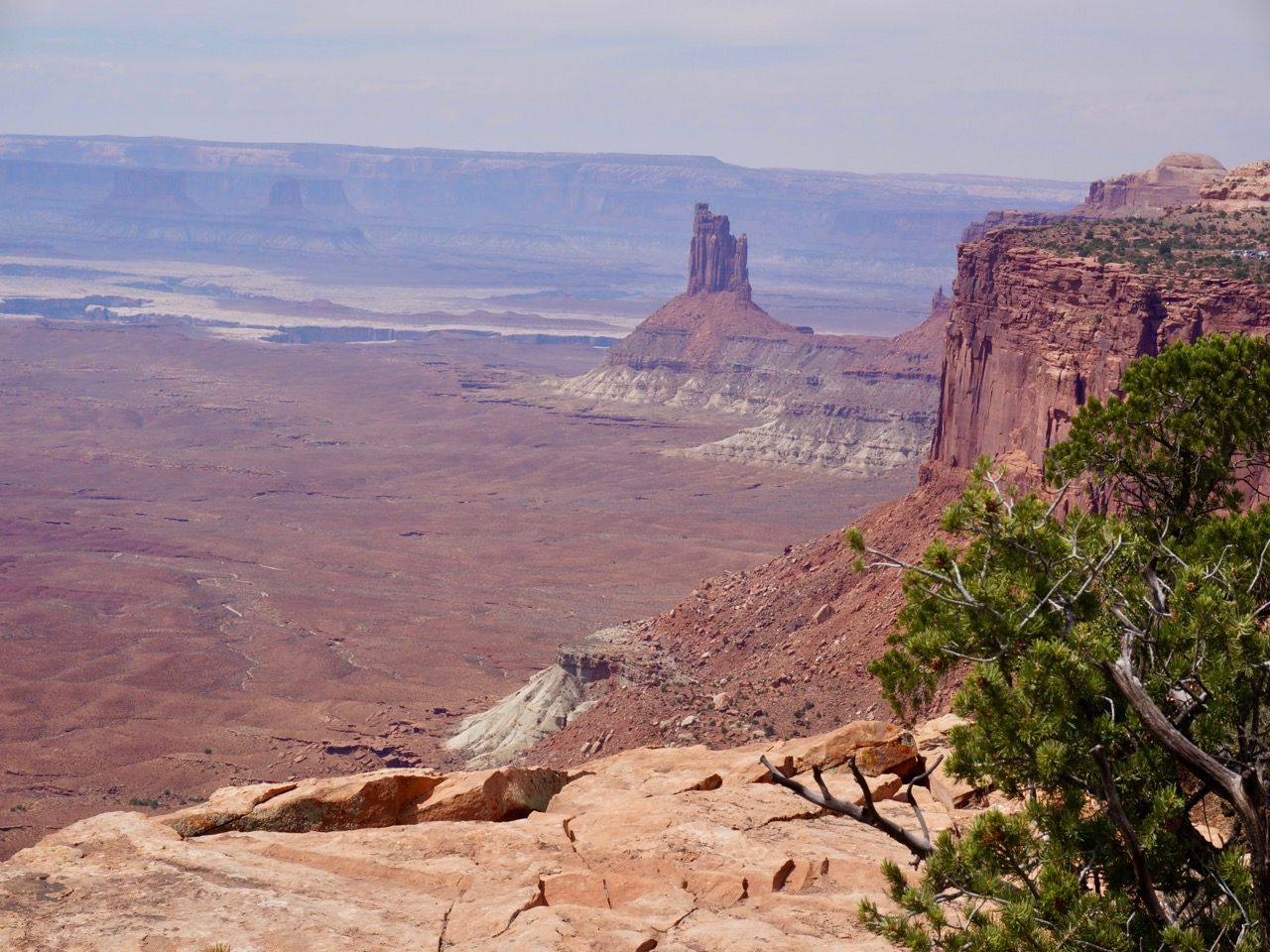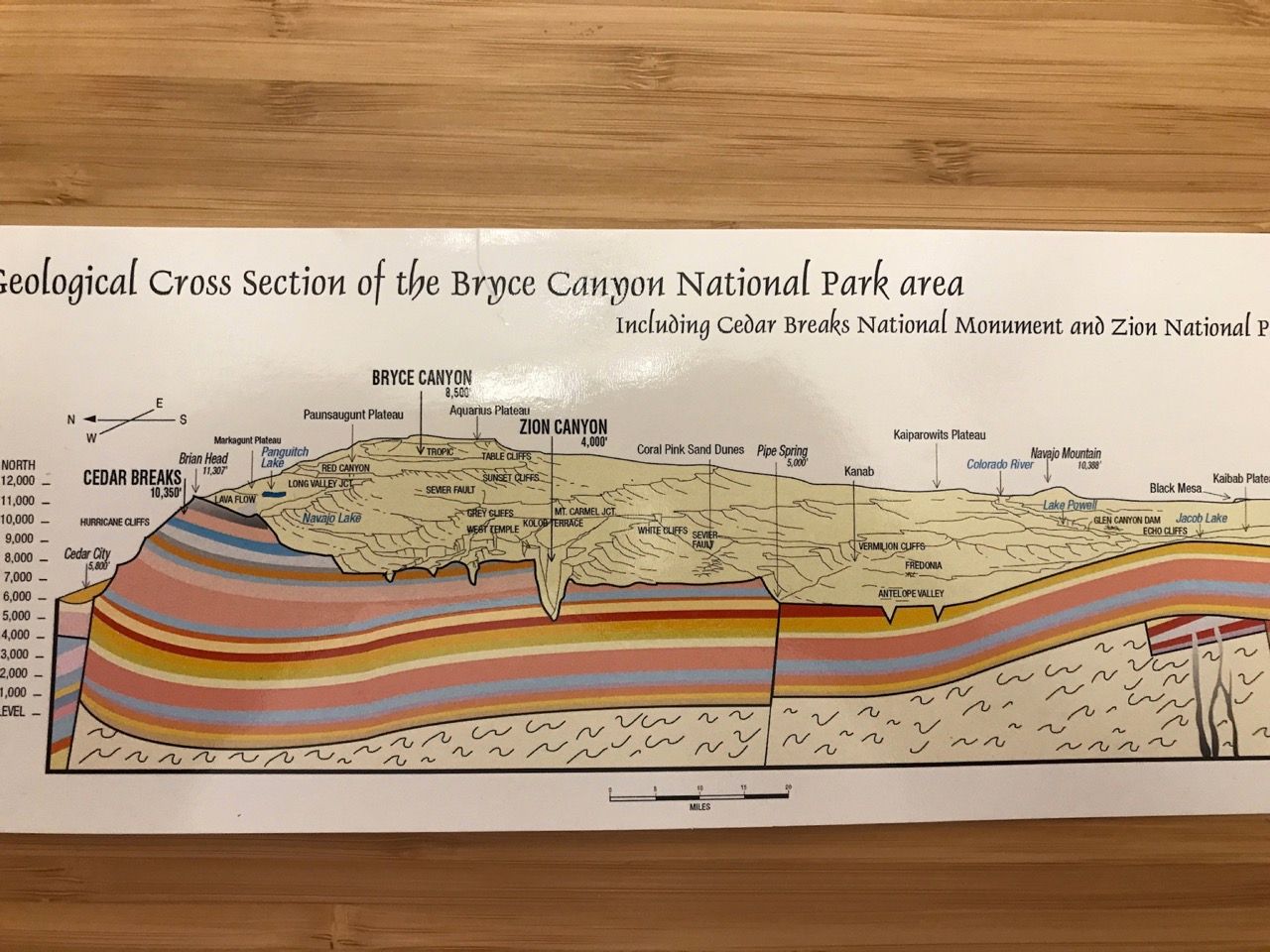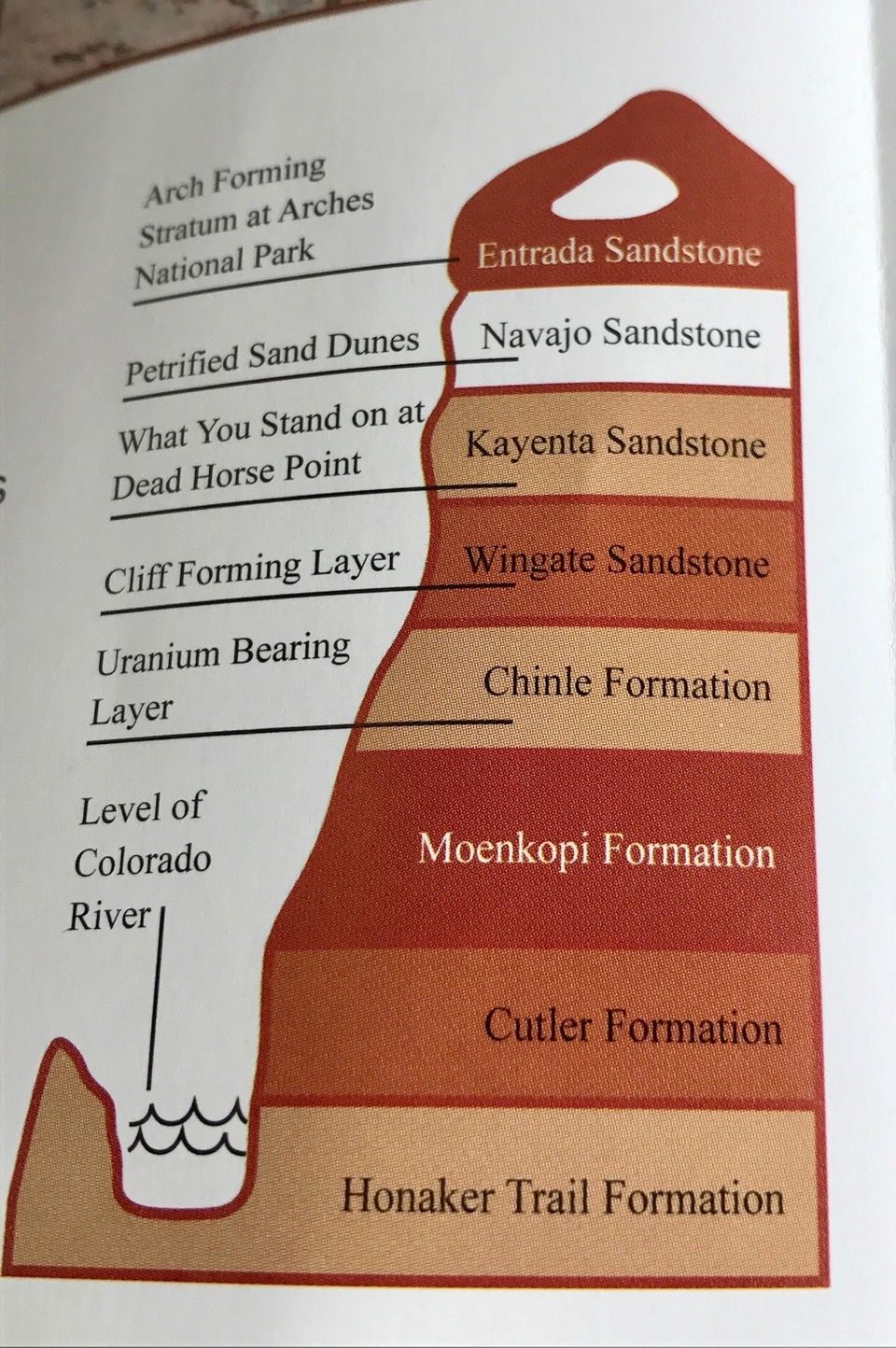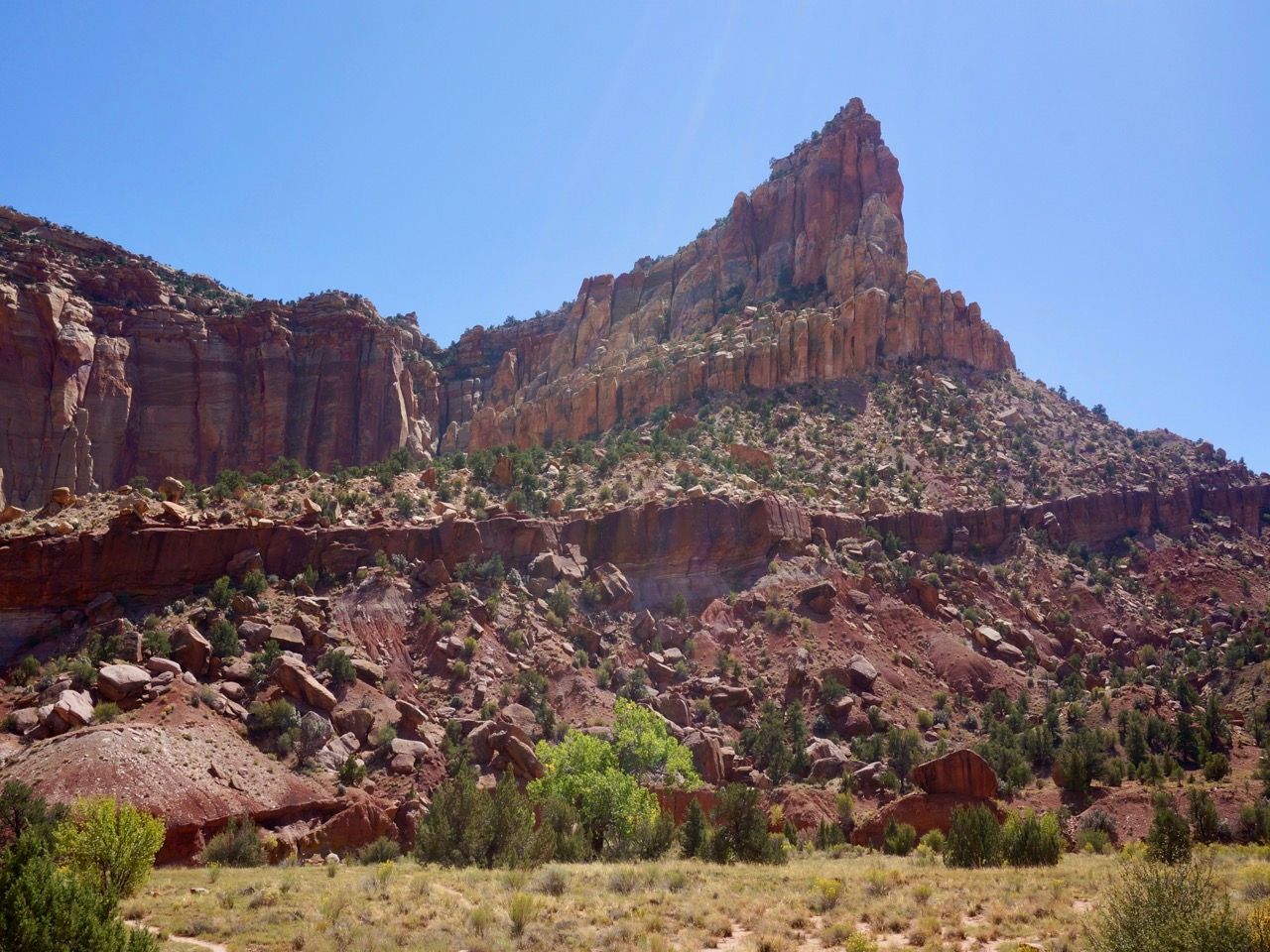Coda: Making a Little Sense of Geology (without snoring!)
We have visited eleven monuments, state and national parks and learning about the geology of this area puts it all into perspective. It has been a fascinating and cumulative experience and in order to gain this perspective, and, as promised, Wendy did a bit of research using the many Park materials we acquired on our travels. If you are yawning already, feel free to just go back and enjoy all the previous posts and pictures!
This whole area of eastern Nevada, almost all of Utah, northern Arizona and western Colorado is known as the Colorado Plateau ( "CP"). It started forming almost 300 million years ago. To put that into perspective, the first dinosaurs appeared about 233 million years ago. Salt from seas flowed across the region, evaporated, and left their deposits. Around 195 million years ago, wind-blown sands engulfed the rivers and seas and created enormous dunes that covered the region. At 90 million years ago, seas once again covered this area, indeed, almost ⅔ of North America. Thousands of feet of marine mud piled up on the bottom of this water. 50 million years ago, iron rich sediments accumulated in a large fresh water lake. Over the millions of years, it would dry up, depositing sand and pebbles, and other debris, creating layers of sandstone, siltstone, mudstone and conglomerates. Around 70 mil. yrs ago, the entire CP was uplifted by the collision of tectonic plates, nearly 300 miles to the east. Each fold, wrinkle, bend, slope, mesa top and canyon bottom were created to make a mosaic of environments. And that’s the quick version!

Through the ranger talks, and reading materials, it was emphasized that, repeatedly, four main elements were at work here. The most important, is water. Racing downhill, creeping into fissures in the rocks, it would slice and erode these layers of rocks. In some places, particularly Bryce, the repeated freezing and thawing process would create the shapes that make this area distinct—arches, fins, spires, and hoodoos. In others, like Zion, Grand Canyon, and Glen Canyon, the water would arrive at the bottom, carving out the beautiful canyons and slopes.
The other forces are wind (weathering),erosion(also weathering), and uplift (more later). Each of these four plays an ongoing role in these parks, as they are constantly changing.
One of the most interesting geological facts is the layering of all the various materials that make up this landscape. The reason every park is different, is because this layering did not happen evenly, but was spread out over time, and the addition of many other factors (height, closeness to faults, amount of water, volcanic eruptions, etc.). Here are a couple of handy-dandy charts that help to make these divisions clearer.



To finish, here is a list of some definitions that we probably should have put into this blog earlier to make things easier to understand and reference. However, since we didn’t study Geology 101 before we embarked on this trip, you will just have to get the benefit of them at the end, and share our learning process!
- Amphitheater - A level area with upwardly sloping ground. Technically, Bryce is not a canyon, but a collection of natural amphitheaters.

- Arches - Formed mostly out of salt subsurface, faults shifting and surface erosion that strips off rock layers. Water seeps into fissures, breaking off bits and pieces, wind cleans it out, leaving fins. Some fins collapse, the heartier ones harden, eventually missing sections that sculpt the arches. Made primarily out of Entrada and Navaho sandstone, the top layers of the Grand Staircase.

- Buttes - Large tall rock formation with high sides, somewhat flat and short top. (Picture a bar stool with no back).

- Canyon - A large, deep gorge, usually with a river flowing at the bottom.

- Cuesta - Like a mesa, but with a sloping top. Technically Mesa Verde is made up of cuestas.
- Fins - Thin, narrow-walled "slices" of rock made from erosion, wind and water.

- Grand Staircase - The world’s most complete sequence of sedimentary rocks that cover this region. It is made up of stratified layers, formed over millions of years.

- Hoodoos - Bulbous spires shaped by weathering and erosion in the uppermost layers of the Colorado Plateau. Originally fins, water plays a major role in their formation, mostly by seeping into fractures, and repeatedly freezing and thawing, leaving holes or windows which eventually collapsed, leaving a column. In Bryce, the highest in elevation of the parks, this happens multiple times at least 180 days per year and is constantly changing.

- Mesa - High, usually straight rock formation, wider than it is high. (Picture a table). Mesa tops (and cuestas) supported crops in fertile soil, albeit dry. Ancestral peoples (Pueblo, Navaho, Anastazi) often made their homes here.

- Navaho Sandstone - One of the top layers of the Grand Staircase, found predominantly in Zion, Arches/Canyonlands, and Bryce, made of sand dunes hardened by iron and other ground water minerals.

- Plateau - a high plain or tableland usually consisting of relatively flat terrain that is raised significantly above the surrounding area
- Stratigraphy - The study of stratified rock layers which, among other things reveal their age.
- Uplift - Between 50 and 70 million years ago, an ancient fault was reactivated, lifting layers of rocks to the west of the fault 7000 feet higher than the east. Instead of cracking the earth, the rock layers folded over the fault line. The same thing happened again about 20 million years ago.
- Waterpocket Fold - A wrinkle in the earth’s crust extending over 100 miles from Thousand Lakes Mountain near Nevada, to Lake Powell area in Utah. It was created by deposits, uplift, and erosion.

A FINAL WORD
Jim and Wendy hope you have enjoyed reading our blog as much as we have enjoyed researching and writing it. Thank you for your comments and feedback over the past few weeks. Perhaps it has inspired you to take some or all of this trip. If so, we’d love to help with planning in any way. And please share your travel experiences, as well. Now that we are both retired, we hope to take many other trips exploring our own country and other places afar. Safe and happy travels!

comments powered by Disqus